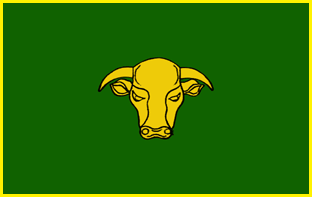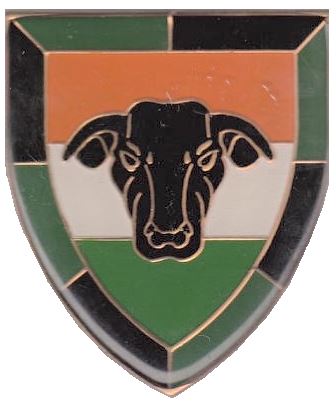Transkei Defence Force on:
[Wikipedia]
[Google]
[Amazon]
The Transkei Defence Force (TDF) was established during March 1981, from the 141 Battalion of the



South African Defence Force
The South African Defence Force (SADF) (Afrikaans: ''Suid-Afrikaanse Weermag'') comprised the armed forces of South Africa from 1957 until 1994. Shortly before the state reconstituted itself as a republic in 1961, the former Union Defence F ...
(SADF). It was the defence force of the Republic of Transkei, a nominally independent bantustan
A Bantustan (also known as Bantu homeland, black homeland, black state or simply homeland; ) was a territory that the National Party administration of South Africa set aside for black inhabitants of South Africa and South West Africa (now N ...
during the Apartheid
Apartheid (, especially South African English: , ; , "aparthood") was a system of institutionalised racial segregation that existed in South Africa and South West Africa (now Namibia) from 1948 to the early 1990s. Apartheid was ...
era of South Africa
South Africa, officially the Republic of South Africa (RSA), is the southernmost country in Africa. It is bounded to the south by of coastline that stretch along the South Atlantic and Indian Oceans; to the north by the neighbouring countri ...
.
History
Origin
In 1981, the newly formed Transkei Defence Force (TDF) received a gift of equipment from theSouth African Defence Force
The South African Defence Force (SADF) (Afrikaans: ''Suid-Afrikaanse Weermag'') comprised the armed forces of South Africa from 1957 until 1994. Shortly before the state reconstituted itself as a republic in 1961, the former Union Defence F ...
.
The Rhodesian connection
In 1982, the Minister of Defence and then Prime Minister, G.M. Matazima announced the employment of a group of expatriate advisers from the formerRhodesia
Rhodesia (, ), officially from 1970 the Republic of Rhodesia, was an unrecognised state in Southern Africa from 1965 to 1979, equivalent in territory to modern Zimbabwe. Rhodesia was the ''de facto'' successor state to the British colony of S ...
. A group of about 30 former Rhodesians had actually commenced employment in March 1981, under the auspices of the Security Services Transkei Company. Former Rhodesian Selous Scouts
The Selous Scouts was a special forces unit of the Rhodesian Army that operated during the Rhodesian Bush War from 1973 until the reconstitution of the country as Zimbabwe in 1980. It was mainly responsible for infiltrating the black majority p ...
founder Ronald Reid-Daly
Ronald Francis Reid-Daly (22 September 1928 – 9 August 2010) was a Rhodesian military officer who founded and commanded the Selous Scouts special forces unit that fought during the Rhodesian Bush War.
Career
Reid-Daly, who was born ...
was hired to serve as commander of the TDF and to supervise training.
Head of the Defence Force
President K.D. Matanzima retired as State President in February 1986, and was succeeded by his brother, G.M. Matanzima.Attack on the Ciskei
In 1985, Apartheid practitioners conceived a plan to merge the Transkei and Ciskei and create a 'united nation of Xhosa speakers' who they thought would support the South African government and help it to stamp out unrest in the Eastern Cape. Matanzima had long held ambitions to rule such a territory, and had opposed the 'independence' of Ciskei in 1981 in the hope that this merger would be realised. On 19 February 1987, a truckload of Transkei special forces unsuccessfully attacked the home in Bisho of the Ciskei President, Chief Lennox Sebe. The raid was apparently under the control of the former members of the Rhodesian Security Forces, although Matanzima refused to admit Transkeian involvement. The raid appeared to be aimed at the overthrow of Lennox Sebe, but the plan, failed after it was leaked to Brigadier Bantu Holomisa.Consequences of the attack
This together with resistance to the raid from elements within the Transkei, played an important role in the ascendance to power of Ms. Stella Sigcau and Brigadier Bantu Holomisa. By April 1987, the contracts of 27 white military officers, including the former Rhodesians, were terminated and a group of 20 of these men including their commander, Major GeneralRonald Reid-Daly
Ronald Francis Reid-Daly (22 September 1928 – 9 August 2010) was a Rhodesian military officer who founded and commanded the Selous Scouts special forces unit that fought during the Rhodesian Bush War.
Career
Reid-Daly, who was born ...
were expelled from the Transkei.
Rumours of a coup attempt by the former State President K.D. Matanzima followed the expulsions. The botched raid also earned Transkei the enmity of South Africa which had considered the Rhodesians to be a stabilising factor.
President G.M Matanzima announced Brigadier Holomisa who had been released due to public pressure after nine weeks detention would be promoted to Major General and would succeed General Zondwa Mtirara as commander of the TDF. Holomisa had been detained by the Government as he had apparently agitated against the role of the white officers in the TDF as well as stirring disaffection on the basis of the Matanzima government.
Coup
By 23 September 1987, TDF soldiers served resignation letters on the Transkei cabinet. President G.M. Matanzima resigned in the wake of mounting evidence of corruption. Ms Stella Sigcau was elected as the new Prime Minister, but the TDF took over the administration of the Transkei in a bloodless coup on 30 December 1987, after only 86 days. Major General Holomisa declared martial law and suspended the Transkei constitution, alleging Ms. Sigcau had been involved in the corruption as well. A military council was formed and remained in power.Coup attempt
In November 1990, a group of six white and black soldiers attempted to mount a coup, but they failed when troops loyal to Holomisa overcame the plotters. Eighteen people were killed, including the leader of the coup, Colonel Craig Duli.Equipment
The TDF was equipped for counter-insurgency (COIN) operations. The TDF used: * R4/R5 assault rifles, * light machine guns, * multiple grenade launchers, * and mortars and * Browning machine guns.Insignia

Ranks
Disbandment
With the end ofApartheid
Apartheid (, especially South African English: , ; , "aparthood") was a system of institutionalised racial segregation that existed in South Africa and South West Africa (now Namibia) from 1948 to the early 1990s. Apartheid was ...
in 1994 in South Africa, the former defence forces of the Bantustan
A Bantustan (also known as Bantu homeland, black homeland, black state or simply homeland; ) was a territory that the National Party administration of South Africa set aside for black inhabitants of South Africa and South West Africa (now N ...
s were incorporated into the newly formed South African National Defence Force
The South African National Defence Force (SANDF) comprises the Military, armed forces of South Africa. The commander of the SANDF is appointed by the President of South Africa from one of the Military branch, armed services. They are in turn a ...
.
The SANDF's new 14 South African Infantry Battalion heraldry clearly originates from the Transkei Defence Force, its forbear.


References
{{SA Army Units Apartheid government Organisations associated with apartheid Defunct organisations based in South Africa Disbanded armed forces Military units and formations established in 1981 Military units and formations of the Cold War Military units and formations of South Africa Transkei Military decorations and medals of Transkei Military units and formations disestablished in 1994